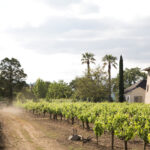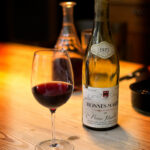Pinot Noir and Chardonnay produce the best wines on the planet. Nearly everyone who has tasted these wines from various regions will confirm what sommeliers and wine experts have long accepted: the optimal place to grow Pinot Noir and Chardonnay is Burgundy. The region’s terroir and climate are ideally suited for these grapes. In the skilled hands of an experienced vigneron during a very good, excellent or exceptional vintage, the vinous results are often astounding, especially when it’s a 1er Cru and Grand Cru wine that has aged a decade or two in the cellar.
Few Pinot lovers would ever mistake a ripe, round, cola-inflected, densely fruited California Pinot or a bright, herbal, green-leaf-tinged Chilean Pinot for one from Burgundy. But there is a considerable range of expression for Pinot Noir and Chardonnay from Burgundy, especially when you take into account the various subregions and appellations found within the larger area. In Burgundy, the many aromatic and flavor faces of Pinot Noir are centered on savory characteristics informed by alluring aromas and flavors of red and black fruits, sous bois (woodsy undergrowth), damp moss and soil-driven earthiness. These profiles are distinctive in the world of wine. Similarly, Burgundian Chardonnay accents the aspects of freshly picked stone fruits, rocks, stony minerality, citrus-driven acidity and the high-pitched aromas special to limestone-rich soils. Compelling examples closer to Burgundy’s elegant, balanced, cool climate Pinot Noirs are those from Rio Negro in Argentina’s Patagonia, Central Otago in New Zealand, and Oregon.

At the northeastern corner of Burgundy, the Chardonnay-based wines from Chablis are bone-dry whites, yet within the realm of dry white Burgundies, and full of nuance especially those from 1er Cru vineyards like Vaillons and La Forêt, and from Grand Cru vineyards like Les Clos, Valmur, and Vaudésir. The Kimmeridgian limestone soil that characterizes the best traditional vineyards in Chablis contains exogyra virgula, small fossilized oyster shells that impart a marked minerality to the wines, which exhibit flinty and stone-driven aromas and flavors, with bright, fresh, lemon-lime acidity.
 The most well-known part of Burgundy is the Côte d’Or (‘Golden Slope’), a long strip of appellations divided into two parts, the Côte de Nuits to the north and the Côte de Beaune to the south. The Côte de Nuits appellations (Marsannay, Fixin, Gevrey-Chambertin, Morey-St.-Denis, Chambolle-Musigny, Vougeot, Flagey–Echezeaux, Vosne-Romanée, and Nuits-St.-Georges) produce mostly Pinot Noir wines, which many collectors and sommeliers regard as the best red wines in the world. These Pinots have uncommon precision and depth on the palate. In his books on Burgundy, Clive Coates has noted that, in texture, Vosne-Romanée wines are like satin while Chambolle-Musigny wines are silky. Besides the classic-for-Burgundy red and black fruit aromas and flavors, Côte de Nuits Pinots often show dusky, herbal, mineral notes with definition, shaped by balancing acidity. With medium body, they have a profound depth of flavor on the palate without being heavy, cloying or clumsy. As you progress higher up the quality scale from regional to village, 1er, and Grand Cru, the wines have unmistakably more complex aromas, flavors, and persistence on the palate. The sensory experience is like a walk in the woods after a soft rain, and comparing the fertile, fecund aromas of wild herbs and forest greens to that of old dried spices from the supermarket. For Côte de Nuits Pinots, the best value-for-money wines come from Marsannay, Fixin and Côte de Nuits Villages. For Chardonnay, Bourgogne Blanc wines made from grapes sourced from Côte de Nuits vineyards are well worth searching out, as are relatively rare whites from Marsannay, Fixin, Nuits-St.-Georges, and Chambolle-Musigny.
The most well-known part of Burgundy is the Côte d’Or (‘Golden Slope’), a long strip of appellations divided into two parts, the Côte de Nuits to the north and the Côte de Beaune to the south. The Côte de Nuits appellations (Marsannay, Fixin, Gevrey-Chambertin, Morey-St.-Denis, Chambolle-Musigny, Vougeot, Flagey–Echezeaux, Vosne-Romanée, and Nuits-St.-Georges) produce mostly Pinot Noir wines, which many collectors and sommeliers regard as the best red wines in the world. These Pinots have uncommon precision and depth on the palate. In his books on Burgundy, Clive Coates has noted that, in texture, Vosne-Romanée wines are like satin while Chambolle-Musigny wines are silky. Besides the classic-for-Burgundy red and black fruit aromas and flavors, Côte de Nuits Pinots often show dusky, herbal, mineral notes with definition, shaped by balancing acidity. With medium body, they have a profound depth of flavor on the palate without being heavy, cloying or clumsy. As you progress higher up the quality scale from regional to village, 1er, and Grand Cru, the wines have unmistakably more complex aromas, flavors, and persistence on the palate. The sensory experience is like a walk in the woods after a soft rain, and comparing the fertile, fecund aromas of wild herbs and forest greens to that of old dried spices from the supermarket. For Côte de Nuits Pinots, the best value-for-money wines come from Marsannay, Fixin and Côte de Nuits Villages. For Chardonnay, Bourgogne Blanc wines made from grapes sourced from Côte de Nuits vineyards are well worth searching out, as are relatively rare whites from Marsannay, Fixin, Nuits-St.-Georges, and Chambolle-Musigny.
Côte de Beaune appellations (Pernand-Vergelesses, Aloxe-Corton, Ladoix-Serrigny, Savigny-lès-Beaune, Chorey-lès-Beaune, Beaune, Pommard, Volnay, St.-Romain, Monthelie, Meursault, Auxey-Duresses, Puligny-Montrachet, Chassagne-Montrachet, and Santenay) produce mostly Chardonnay wines, which are regarded by many wine experts as the best white wines made. Interestingly, up to the 1970s, most of the Côte de Beaune was planted to Pinot. These vines were replaced because Côte de Beaune Chardonnays could fetch a better price in the market. Whether it’s a racy fine-boned Puligny; a stony, mineral Chassagne; or a broad, fleshy Meursault, Côte de Beaune Chardonnay wines can have “other worldly” quality special to whites from this part of Burgundy. Corton-Charlemagne Grand Cru shows an austere, crushed stones aspect of Chardonnay while Montrachet and Batard-Montrachet Grand Crus exhibit expansive, mineral, profoundly earthy aromas and near-endless flavors on the palate. Côte de Beaune Pinots tend to be a bit lighter in body and structure than examples from the Côte de Nuits, but are no less perfumed or textured on the palate, especially from 1er Cru and higher level vineyards in Corton, Volnay, Pommard, Beaune, Pernand-Vergelesses, Savigny-lès-Beaune, and Chorey-lès-Beaune. Real value-for-money “sleepers” are reds from Meursault, Chassagne-Montrachet, Monthelie, Pernand-Vergelesses, and Santenay.

Côte Chalonnaise appellations (Givry, Mercurey, Montagny, and Rully) offer strong value-for-money wines for both Pinot Noir and Chardonnay. Here, Pinots are light- to mid-bodied, and show textbook red cherry and strawberry aromas and flavors. These Burgundy Pinots are perhaps the closest to some top-quality Pinots from Oregon and California. Chards show the pitched aromas and mineral-driven cut you expect from this grape in Burgundy. Some Givry 1er Cru Pinots and Chards outperform their Côte de Beaune counterparts, including wines from Domaine François Lumpp, Domaine Joblot, Domaine Chofflet-Valdenaire, and Domaine de Clos Salomon.
Appellations in the Mâconnais (Saint-Véran, Pouilly-Vinzelles, Pouilly-Loché, Pouilly-Fuissé, Viré-Clessé; at a lower level, Mâcon-Villages, and Mâcon) produce almost entirely Chardonnay wines. This area’s average sunlight and ripeness are greater than Burgundy’s other regions to the north, resulting in wines that are robust, round and structured. As with other Burgundies, the best examples can age and evolve for decades. In the 1980s, the Pouilly-Fuissé appellation emerged from obscurity to quickly become an often-requested brand in the NYC market. Though Pouilly-Fuissé remains the most recognized appellation, Saint-Véran, Viré-Clessé, and others can now match it for quality.
Larger producers to look for are: Louis Jadot, Joseph Drouhin, Maison Champy, Domaine Chanson, Domaine Faiveley, Domaine Vincent Girardin, and Maison Bertrand Ambroise. Smaller quality ones are Alex Gambal, Maison Verget, and Maison Roche de Bellene. And top quality family domaines are: Armand Rousseau, Jacques-Frédéric Mugnier, Ghislaine Barthod, Mugneret-Gibourg, Michel Lafarge, Bruno Clavelier, and Humbert Freres.




